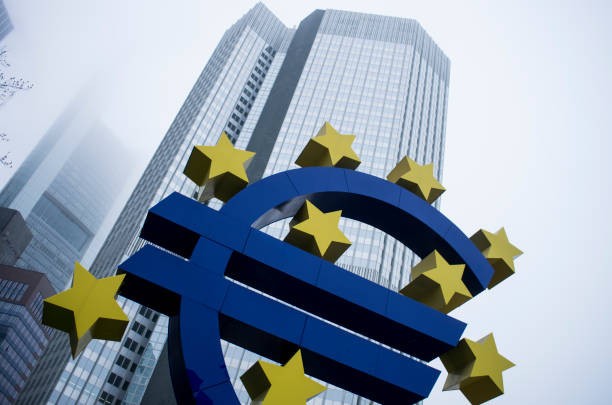ECB Now Winning Inflation Fight, Lane Says

Summary
- Recent supply shocks should ease inflation
- Forward-looking indicators indicate disinflation
- Rate increases to stop when clear inflation is heading to the target
- Rate plateau should be maintained for some time
Eurozone inflation pressures have started to decrease, including the all-important core prices, but the European Central Bank will not stop rate increases until it is convinced price growth is going back towards 2%, ECB Chief Economist Philip Lane said.
The ECB has hiked rates by 3 percentage points since July and promised a further half a percentage hike in March, in the hope that more expensive funding will shrink demand enough to lower price growth from levels still above 8%.

Lane said higher interest rates are creeping into the economy, weighing down on the price of services and other core goods, which exclude volatile fuel and food. Lane told Reuters in an interview:
“There’s significant evidence that monetary policy is kicking in. For energy, food, and goods, there’s a lot of forward-looking indicators saying that inflation pressures in all of those categories should come down quite a bit.”
Other policymakers, including board member Isabel Schnabel and Dutch central bank chief Klaas Knot, have voiced concern core inflation could get stuck and sustain inflation.
For the ECB to stop rate increases, Lane outlined three criteria. The bank needs to slash inflation projections through its three-year forecasting horizon and forge ahead in lowering actual underlying inflation. Lastly, it needs to conclude that monetary policy is working.
“We’re all signed up to the criterion that sufficient progress in underlying inflation is important,” Lane said.
Once rates plateau, the ECB intends to keep them there for some time and will not review plans as soon as core inflation begins dropping significantly, he said.
Asked how long rates could remain in a territory that curbs economic growth, Lane said: “It could be quite a long-lasting period, a fair number of quarters.”
Markets expect the ECB’s 2.5% deposit rate to increase to around 4% by the end of 2023, with the peak rate estimate rising by around 35 basis points in February alone, mostly over fears core inflation has got stuck.
Shift Downwards Not Just About Fuel
While lower fuel prices have caused a recent inflation drop, Lane said a closer look at the data shows a more broad-based decline.
“Actual goods retail prices are still very strong, but the intermediate stage has been a good predictor of price pressures,” Lane said.
“The fact that these are turning around, including through the easing of bottlenecks and global factors, suggest that there will be significant reductions in inflation rates for energy, food, and goods.”
Services pricing pressures are also subsiding as supply rebounds from post-pandemic bottlenecks, making wages the issue to monitor.
Airlines, restaurants, and hotels are more capable to plan capacity than in 2022, which lowers the supply side component of price pressures.
Lane disregarded the idea that core inflation could move independently from overall price growth for long as workers base their wage demands on headline inflation and a lower rate there will affect incomes and thus underlying price pressures.
Return To Negative Rates Unlikely
Price pressures have dampened to the extent that Lane suggested a slash in the ECB’s own projections, due on March 16.
He hinted at lower oil and gas prices, China’s reopening, easing of bottlenecks, copious fiscal support, and the ECB’s own rate increases as factors weighing down inflation.
“The supply shocks, on net, lower inflationary pressures,” he said. “If you look further, to 2024, to 2025, the tightening of monetary policy has been significantly more than what was baked into the December forecast and that has to be factored into the new forecasts.”
None of these shocks are enough, however, for the ECB to shelve plans for a 50 basis point rate rise, Lane said. While the rate increases could creep into the economy more slowly than before, the impact could be more persistent since the ECB was unlikely to return to negative rates.
The market has estimated the longer-term equilibrium rate at nearly 2%, so 250 basis points of rate rises are de facto permanent and will thus ease price pressures more sustainably, Lane added.






 Bitcoin
Bitcoin  Ethereum
Ethereum  Tether
Tether  USDC
USDC  TRON
TRON  Dogecoin
Dogecoin  Cardano
Cardano  Bitcoin Cash
Bitcoin Cash  Chainlink
Chainlink  Monero
Monero  LEO Token
LEO Token  Zcash
Zcash  Stellar
Stellar  Litecoin
Litecoin  Hedera
Hedera  Dai
Dai  Cronos
Cronos  Tether Gold
Tether Gold  OKB
OKB  Ethereum Classic
Ethereum Classic  KuCoin
KuCoin  Gate
Gate  Algorand
Algorand  Cosmos Hub
Cosmos Hub  VeChain
VeChain  Tezos
Tezos  Dash
Dash  TrueUSD
TrueUSD  Stacks
Stacks  IOTA
IOTA  Basic Attention
Basic Attention  Decred
Decred  Theta Network
Theta Network  NEO
NEO  Synthetix
Synthetix  Qtum
Qtum  Ravencoin
Ravencoin  DigiByte
DigiByte  0x Protocol
0x Protocol  Nano
Nano  Zilliqa
Zilliqa  Siacoin
Siacoin  Numeraire
Numeraire  Waves
Waves  BUSD
BUSD  Status
Status  Ontology
Ontology  Enjin Coin
Enjin Coin  Pax Dollar
Pax Dollar  Lisk
Lisk  Hive
Hive  Steem
Steem  Huobi
Huobi  OMG Network
OMG Network  NEM
NEM  Bitcoin Gold
Bitcoin Gold  Augur
Augur  HUSD
HUSD